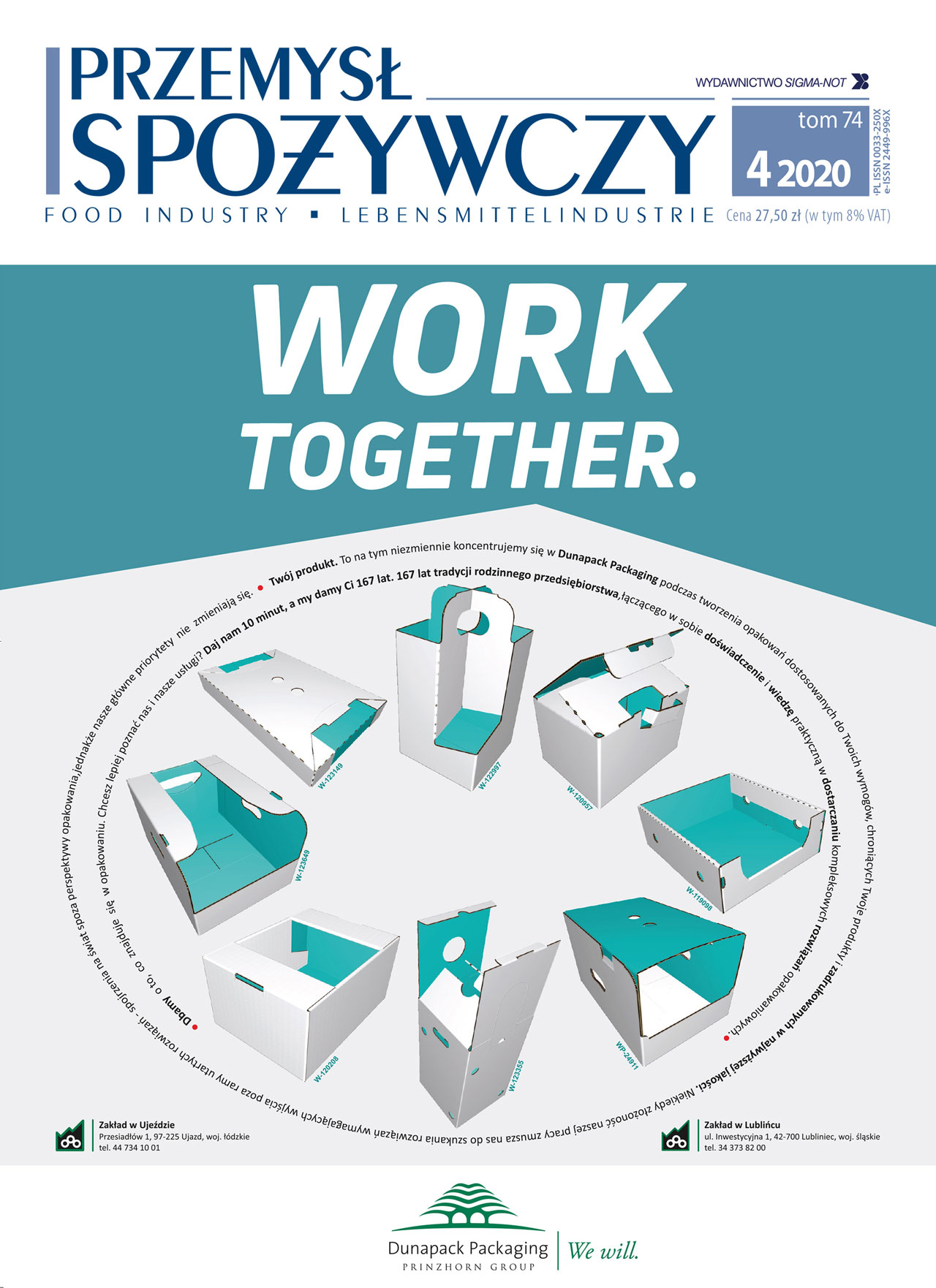ECONOMY
- 2 Spatial Distribution of Food Industry Enterprises in Poland – Jadwiga Drożdż (DOI 10.15199/65.2020.4.1)
Currently, the spatial diversity of the locations of the food industry enterprises is the result of three factors. First: decisions taken in previous decades, when the raw material base and sales market were an important location factor. Secondly: an increase in the number of companies, especially private ones, in the period of market economy, emerging in the area of large urban agglomerations, but also near the raw material base. Thirdly ongoing concentration and consolidation of companies to ensure the competitiveness of the sector not only on the domestic market but also on foreign markets. The assessment of the spatial diversity of the location of food industry enterprises indicates that the leader is the Mazowieckie District, and in-depth research using the location quotient (LQ) shows that this branch of industry is highly concentrated in the Podlaskie District, it is also key in the Warmińsko-Mazurskie District, and about the region’s specialization we can also speak in the Lublin District.
KEY WORDS: food industry, location of food companies, location indicator
TECHNICS – TECHNOLOGY
- 8 The Importance of Extrusion in Food Processing – Marta Meisel (DOI 10.15199/65.2020.4.2)
The article presents issues regarding the extrusion process and its role in creating food products, particularly their chemical composition. Extrusion is a widely used technological process for food production. Thanks to its many advantages, it is more and more willingly and often used by producers, especially when they want to reduce costs or implement new, attractive food for the consumer. Very easy manipulation of the process conditions allows to obtain products from various raw materials, enriched with nutritious ingredients, with the addition of natural dyes, of various shapes and textures, and at the same time affordably priced. In the food industry, HTST technology is most widely used to produce all kinds of breakfast cereals, salty and sweet snacks and modified starches
KEY WORDS: extrusion, HTST technology, food processing, nutrients
- 14 Alternative Modification Methods of Edible Oils and Fats – Iwona Szymańska, Laura Przybyszewska, Anna Żbikowska (DOI 10.15199/65.2020.4.3)
The article presents various methods of edible oils and fats modification as well as their impact on nutritional / health value and technological features of obtained products. Fats with a high content of saturated fatty acids (SFA) and trans isomers (TFA) demonstrate high utility value. However, SFA and TFA cause the increase of the risk of diet-related diseases, therefore it is necessary to eliminate them from food. Partially hydrogenated fats, whose content in food is intensively limited, have the worst nutritional properties. Chemical transesterification, commonly used in industry, does not solve the problem of high SFA content in food fats. In turn, use of enzymatic transesterification on the large-scale (pro-ecological method) is very limited due to the high cost of the process. Scientific research indicates that oleogelation, i.e. modification of oil properties using the structuring substances, is a new, future-oriented method. This is a promising prospect of replacing SFA fats with innovative, nutritionally and technologically beneficial fat systems.
KEY WORDS: edible fats, structuring, fractionation, enzy- matic transesterification, oleogelation
- 20 The Role of Product Life Cycle Assessment in Analysing the Impact of The Agri-Food Sector on The Environment – Magdalena Karwacka, Agnieszka Ciurzyńska, Monika Janowicz (DOI 10.15199/65.2020.4.4)
Sustainable development is a concept whose goal is to seek solutions to social, economic and environmental problems on a global scale resulting from human activities. The development of the agri-food industry, due to its complexity and scale, has a significant impact on the environment, which is why it is very important to implement strategies to reduce this impact. The indicators used to determine the environmental impact of human activities, including the agri-food industry, are called environmental footprints, for which the life cycle assessment of products is used. There are four phases in this method – goal and scope definition, inventory analysis, life cycle impact assessment and interpretation. The results obtained are affected by large inaccuracy, so further research is needed to develop new or improve existing methods for determining environmental footprints.
KEY WORDS: agri-food industry, sustainable development, product life cycle assessment
- 25 Food Industry Trends – Joanna Markowska, Elżbieta Polak (DOI 10.15199/65.2020.4.5)
The food industry is a sector of the economy whose specificity is reflected in consumer preferences. Identifying the needs and preferences of customers and the ability to flexibly respond to them stimulate innovative activities in food production. Consumer awareness of the impact of food on health, as well as nutrition trends and market observation, are conducive to the production of innovative, high-quality food, often with special health-promoting properties. The dominant trends have been reflected in minimally processed, functional, personalized food, using innovative raw materials or packaging. They also relate to actions to prevent food waste, rational waste management and care for the natural environment. The article presents selected trends in the food industry and consumer attitudes observed in recent years.
FOOD – FEEDING
- 31 The Most Common Microbiological Hazards of Frozen Food Products – Aleksandra Antoszewska, Joanna Kowalska, Maja Ławrynowicz-Paciorek, Dorota Korsak, Elżbieta Maćkiw (DOI 10.15199/65.2020.4.6)
Freezing is one of the most effective methods of preserving foods. Microorganisms cannot multiply in frozen products. Freezing can lead to a reduction in the number of bacteria, but not to a complete reduction in their numbers. However, it should be noted that the use of low temperatures cannot guarantee the full microbiological safety of the product. The presence of microorganisms, mainly pathogenic, in frozen products is a threat to public health, especially when they are intended for direct consumption, without the need for heat treatment or other treatment effectively eliminating their occurrence.
KEY WORDS: food, frozen products, microbiological hazard, patho
EVENTS
- 7 Elżbieta Bokus (1953-2020)
- 30 Origin of the basic ingredient – new requirement




